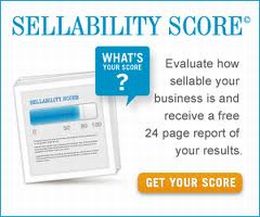If you’re like the majority of business owners, you probably anticipate funding the majority of your financial goals or next big adventure with the sale of your business. In fact, surveys indicate that more than 90 percent of business owners believe the proceeds from the sale or transfer of their business is very important in meeting their financial needs.
There’s nothing wrong with that; however, without the right planning and approach, you may unfortunately find that there’s a gap between your financial resources and your future financial needs when it’s time to exit your business. That’s the first type of value gap you can experience.
The first step in determining if this type of value gap exists is to determine what your future goals look like. Here are a few things to consider:
- Determine what lifestyle you’d like after you exit your business: Would you like to travel extensively? Return to school? Purchase a vacation home?
- Develop a list of anticipated post-transition expenses. Although some of your current expenses, like children’s tuition and other similar expenses, will be reduced or eliminated, new expenses may replace them, including medical and long-term care expenses.
- Determine what you might like to leave to your children, grandchildren, or charities.
- Estimate what your business is worth today through a real world sanity check.
The next step is to determine your required income from all sources, including your investment portfolio, 401(k) or other retirement accounts, other assets, and the value of your business when it’s time to sell. Comparing your anticipated future expenses and income will indicate whether or not you have this type of value gap. If so, now is the time to take action.
You may need to consider different exit strategies that will net you more cash, look for ways to reduce your taxes, explore different investment strategies for the net proceeds that will yield greater results, or work with an experienced advisor to increase the value of your business. This final approach is one that is a higher payoff for planning.
Value Gap #2
The second type of value gap you might experience is a gap between the current value of your business and its future potential value, known as the enterprise value. Many business owners overestimate the real world value of their businesses and are left with an unpleasant surprise at the time of marketing the business for sale. When this occurs, there may be a dramatic shortfall, and owners are left without the financial resources they need to fund the retirement they want or their next big adventure.
No matter when you anticipate exiting your business, planning is critical. As with all financial planning, the sooner you begin, the better your final outcome will be. Even if you don’t anticipate transitioning out of your business for a few years, taking steps now to begin increasing your business’s potential value will pay off in the long run ten-fold!
Having probably spent years building a successful business, of course, you want the most you can get for your business. Many business owners focus on profitability as a leading factor to determining real world value. While profitability is important, the buyer’s perceived risk of achieving that profitability in the future is even more important. This perceived risk causes many business owners to leave money on the table when it’s time to sell their businesses because they ignore the factors that cause these risks.
Closing the Gaps
Working with an exit planner, you can begin taking the needed steps to ensure that you exit on your terms. First, an exit planner will help you identify and enumerate your financial goals to uncover if the first type of gap exists: a gap between your retirement or future plans and your financial resources.
Next, your exit planner can help you close the gap between the current value of your business and its enterprise value. Even if you do not have a gap between your future plans and financial resources, you’ll want to take the necessary steps to achieve your business’s potential value, so you get the most money possible at the time of closing. There are many categories and components in your business that create value drivers that can contribute to and improve business value. These drivers cover all aspects of your business, including operations, financials, investments, sales, marketing, and business intangibles.
You will need to have a review of your business to determine where your business is excelling and what it may be lacking along with the likely causes. This review will help uncover the drivers that are contributing to your current value and those that are not. With that information, you can take the steps necessary to reduce your deficiency drivers (i.e. those that are not contributing to or are deteriorating business value) and improve the overall performance and stability of your business. This can improve your profitability in the near term and also reduces buyer’s perceived risk about the business’s future stability, profitability, and growth.
By taking the steps necessary to eliminate the value gap that may exist between your current business value and its enterprise value, you are simultaneously reducing any value gap that may exist between your goals and your financial resources. These value gaps are essentially two sides of the same coin. The more you realize for your business at the time of transition and your exit, the more money you will have to live life on your terms.
A comprehensive exit plan helps you address all necessary components (including financial and tax planning) and eliminate the value gaps. Begin the exit planning process now, no matter when you plan to transition out of your business, and you can exit on your terms, putting more money in your pocket to meet your goals.





